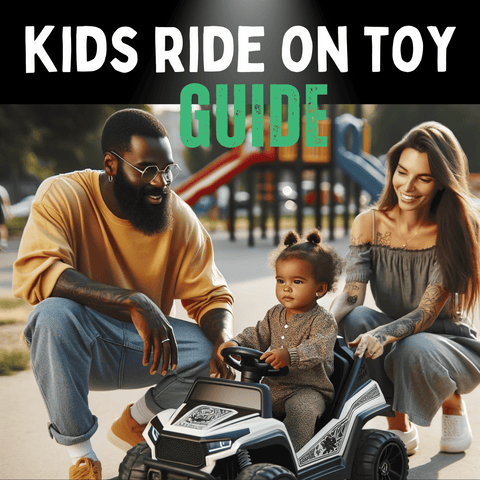
Choosing the perfect ride-on toy for your little one can be as exhilarating as it is overwhelming.
With the myriad of options out there, how can you ensure that your child or grandchild gets the joy of a new toy without compromising on their safety and development?
Whether you’re strolling through park lanes or watching your youngster zoom around the garden, the right ride-on toy can spark endless giggles and create cherished family memories.
Understanding Your Child's Needs

Finding the perfect ride-on toy for your child involves tuning in to their unique requirements and developmental stage.
The toy that captures their imagination and challenges them just enough without causing frustration can be a fantastic aid in their growth.
Age and Walking Skills
Consider the age of your child and their walking abilities.
Toddlers who are just starting to walk will benefit from ride-on toys that are low to the ground, which provide them with the opportunity to touch the ground with their feet.
This kind of access promotes confidence and assists them in developing a sense of movement and space.
For these young explorers, the journey towards mobility is full of discovery, and having a toy that moves with them as they progress from crawling to walking can act as a motivational friend.
Related: Your Kids Electric Toys Age By Age Guide
Stability and Balance
Balance is a critical skill that toddlers learn gradually, and the right toy can facilitate this development.
A ride-on toy with a low centre of gravity and wide wheelbase can be an excellent choice for minimising tumbles and fostering a sense of security.
These design features ensure that the toy is less likely to tip over, offering a reliable platform for your child to engage with.
As your child grows more adept at navigating their ride-on toy, their confidence and balance skills will expand, too, making room for more complex motor skills to develop.
Size and Speed
Size matters when it comes to ride-on toys. A toy that is too large can be intimidating and difficult to maneuver, while one that is too small can be uncomfortable and may affect the child's ability to control it effectively.
The right size means their feet can reach the ground or pedals comfortably, and they can operate the toy without stretching or straining.
In terms of speed, it's important to align the toy's pace with your child's reaction time and walking speed.
A ride-on toy that moves too quickly can be overwhelming and potentially unsafe, while one that trudges along too slowly might bore a more adventurous toddler.
Finding that sweet spot will keep the ride fun and safe.
Choosing the Right Ride-On Toy for Your Child
Compare features and find the best option for children and teens of different ages:
| Type of Toy | Suitable Age Range | Features | Safety Considerations |
|---|---|---|---|
| Pedal-powered Go-karts | 3-7 years | Active play, develops coordination | Sturdy design, no battery required |
| Battery-powered Vehicles | 2-8 years | Realistic features, easy to operate | Speed limit, remote control for parents |
| Electric Ride-On Toys | 3-6 years | Interactive elements, fun designs | Low-speed settings, durable build |
| Petrol-powered Ride-ons | Teens | High performance, advanced features | Comprehensive safety gear, supervised use |
Safety First
When considering safety features, helmets should be a priority, especially for faster models like 24-volt vehicles and even more powerful 36v toys.
Furthermore, to accommodate children in the 3 to 8 years old range, including toddlers, look for models with adjustable speed settings and a 2.4 GHz remote control for adult supervision.
These safety considerations can be pivotal in preventing accidents and ensuring a safe play environment.
Safety Gear
The incorporation of safety gear is paramount. A proper helmet that fits snugly, yet comfortably, can protect against head injuries, while knee and elbow pads cushion falls, which, though often minor, can be distressing and off-putting for young riders.
Wrist guards can also be added to the ensemble, especially for those just starting or for more adventurous rides.
These pieces of equipment should be presented not as optional, but as integral to the experience – much like seatbelts in a car.
Instilling this mindset early on ensures that children grow up respecting the role of safety gear in all active pursuits.
Usage Tips
Equally crucial to the equipment are the usage tips that guide where and how the toy is used.
Steering young riders towards smooth, flat surfaces minimises the risk of accidents caused by rough or uneven terrain that can lead to falls or collisions.
Moreover, clear weather conditions not only make for a more enjoyable playtime but also a safer one.
Wet or slippery conditions can increase the risk of accidents, and poor visibility can prevent caregivers from effectively supervising children at play.
By setting these parameters, you help create an environment where play is both fun and secure.
Weather and Storage Considerations
Finally, proper storage of the ride-on toy ensures both its longevity and safety for continued use.
Toys should be stored in a clean, dry space away from the elements, which will prevent rusting or degradation of materials that could lead to unexpected breakages.
Additionally, safe storage out of the path of adults and other children in the home can prevent tripping hazards and other domestic accidents.
Ensuring that the ride-on toy is in good condition before every use is part of this consideration.
Regular maintenance checks for tire pressure, brakes, battery levels (for electronic toys), and structural integrity can spot problems before they pose a risk to the child.
Types of Ride-on Toys
The realm of ride-on toys is as varied as children's imaginations, offering a spectrum of choices to suit every age and stage of development.
Here's an expanded look at the main types of ride-on toys available:
Push/Pull Ride-Ons
Push/pull ride-ons are often the first encounter a child has with this type of play.
These ride-ons are typically designed for infants and young toddlers who might not yet have the balance or leg strength for more independent options.
They usually feature a low seat and a high back with a handle, allowing parents or siblings to push the child along.
These toys are perfect for developing gross motor skills as well as nurturing an interest in mobility.
They come in various playful designs, from cars and trucks to animals and fantasy creatures, sparking joy and encouraging imaginative play.
Foot-to-Floor Ride-Ons
Foot-to-floor models are the next step up, suitable for toddlers who have mastered walking and are ready to scoot themselves along.
They are designed to be propelled by the child's own feet, giving them control over their speed and direction.
This type of ride-on toy is excellent for strengthening leg muscles, improving coordination, and boosting confidence.
They're often made with a simple, sturdy construction and come in a wide range of styles, including replicas of cars, trains, and more whimsical designs that appeal to the boundless curiosity of a child.
Pedal Ride-Ons
As children grow, pedal ride-ons provide a more advanced level of engagement.
These toys require the use of pedals to move, introducing children to the concept of cycling.
They can range from tricycles, which offer stability for younger riders, to more complex bicycles and go-karts that are suitable for older kids.
Pedal ride-ons are an excellent way for children to develop their coordination and strength, learn about the mechanics of wheels and gears, and enjoy a sense of independence.
They also come in a variety of forms, including realistic miniature vehicles, fantasy creatures, and even themed toys based on popular children's characters.
Electronic Ride-Ons
Electronic ride-ons represent the cutting edge of this toy category.
These battery-powered vehicles can be operated with simple controls, allowing children to drive themselves around at safe speeds.
Some models come with remote controls that parents can use to ensure safety while still giving their children the feeling of autonomy.
These ride-ons can range from cars and motorcycles to ATVs and even small versions of luxury vehicles, complete with realistic features like horns, headlights, and music systems.
While they provide a thrill similar to adult vehicles, they maintain child-friendly speeds and controls to ensure a safe and enjoyable experience.
Each type of ride-on toy has its own set of benefits and considerations, but all share the common goal of fostering growth, learning, and joy in young adventurers.
Whether helping a toddler develop basic motor skills or giving an older child the thrill of independence, ride-on toys are a cherished part of childhood that can offer fun, freedom, and learning opportunities.
Would you like to explore further into the specifics of any particular type of ride-on toy?
Related: Understanding Your Ride-On Car's Charging Process
Advanced Options: Petrol-Powered Ride-Ons
As children grow and seek more thrilling experiences, petrol-powered ride-ons serve as an exhilarating bridge to more advanced levels of play.
These are not just toys; they are sophisticated machines that bring a rush of adrenaline and a taste of independence.
Related: How Do I Transition My Child From an Electric Ride on to Petrol?
Go-Karts, Cars, and Motorbikes
Petrol-powered go-karts offer a sense of high-octane excitement as kids zip around tracks or paved areas, learning the basics of driving and vehicle control.
The thrill is tangible, as these miniature vehicles deliver an authentic driving experience, complete with the growl of engines and the skill of maneuvering.
For those with a love of two wheels, mini-motorbikes provide an exciting introduction to motorcycling, demanding greater balance and coordination, and giving a sense of the freedom that comes with the open road—even if it's just the open backyard.
Quads or ATVs and Off-Road Buggies
For the adventurous spirit, quads and ATVs open up a whole new dimension of exploration.
They are rugged and robust, designed to traverse over bumps and through dirt, providing the ultimate adventure on four wheels.
Off-road buggies push this excitement further, with their capacity to handle a variety of terrains, from garden grass to dirt trails.
These vehicles empower kids to navigate and conquer the outdoors, providing a thrilling experience that also teaches respect for the power and responsibility that comes with operating such machinery.
The introduction of petrol-powered ride-ons is a significant step up from their foot-to-floor and pedal-powered predecessors.
They offer older children and teens an opportunity to handle more complex mechanisms, develop finer motor skills, and learn the essentials of vehicle safety and maintenance.
These advanced options are about more than just play; they're about instilling a sense of capability and the joy of mastering a powerful piece of equipment.
With appropriate supervision and safety measures in place, petrol-powered ride-ons can provide an unforgettable and joyous passage through the later stages of childhood.
Related: Differences Between Petrol And Electric Ride Ons
Ensuring the Fun Factor
The intrinsic value of any children's toy is the delight it inspires, and when it comes to ride-on toys, the fun factor is paramount.
This joy is not merely in the play but begins with the very selection of the toy.
Involving the Child in the Choice
Children possess a unique perspective on the world, one filled with wonder and imagination.
Including them in the process of selecting a ride-on toy does more than just promise future entertainment—it actively engages them in making decisions and expressing their preferences.
This practice not only cultivates their decision-making skills but also amplifies their anticipation and excitement for the new toy.
It becomes not just a plaything but a result of their own choice, which can be incredibly empowering.
Colours and Designs
Never underestimate the draw of a brightly coloured race car or the allure of a pastel princess carriage.
A child's affinity for certain colors or designs can transform a ride-on toy from an inanimate object into a cherished friend.
This emotional connection can influence the frequency and nature of play, fostering a deeper level of creativity and attachment.
The aesthetic appeal can also act as an extension of their personality, making playtime an even more personal and engaging experience.
Related: Ways To Choose The Right Kids Ride On Toy Colour
Test Drives and Learning Curves
Just as adults test drive cars, allowing children to test different ride-on toys can be a thrilling and informative experience.
It gives them a chance to 'feel' the ride, to gauge their own comfort and enjoyment, and to see if the toy challenges their skills appropriately.
These test runs can be a practical way to assess the suitability of a toy's size, complexity, and functionality for a child's particular stage of development.
The Value of Testing
The process of trying out ride-on toys is inherently enjoyable. It turns the practical aspect of ensuring a good fit into an exciting adventure.
A child can immediately sense if the ride is too fast or too slow, too big or just right, much like Goldilocks in her search for the perfect bowl of porridge.
It's an engaging way to find that 'just right' toy that matches their developmental needs and adventurous spirit.
Related: How Fast Do Ride On Toys Go? [A Parents Guide]
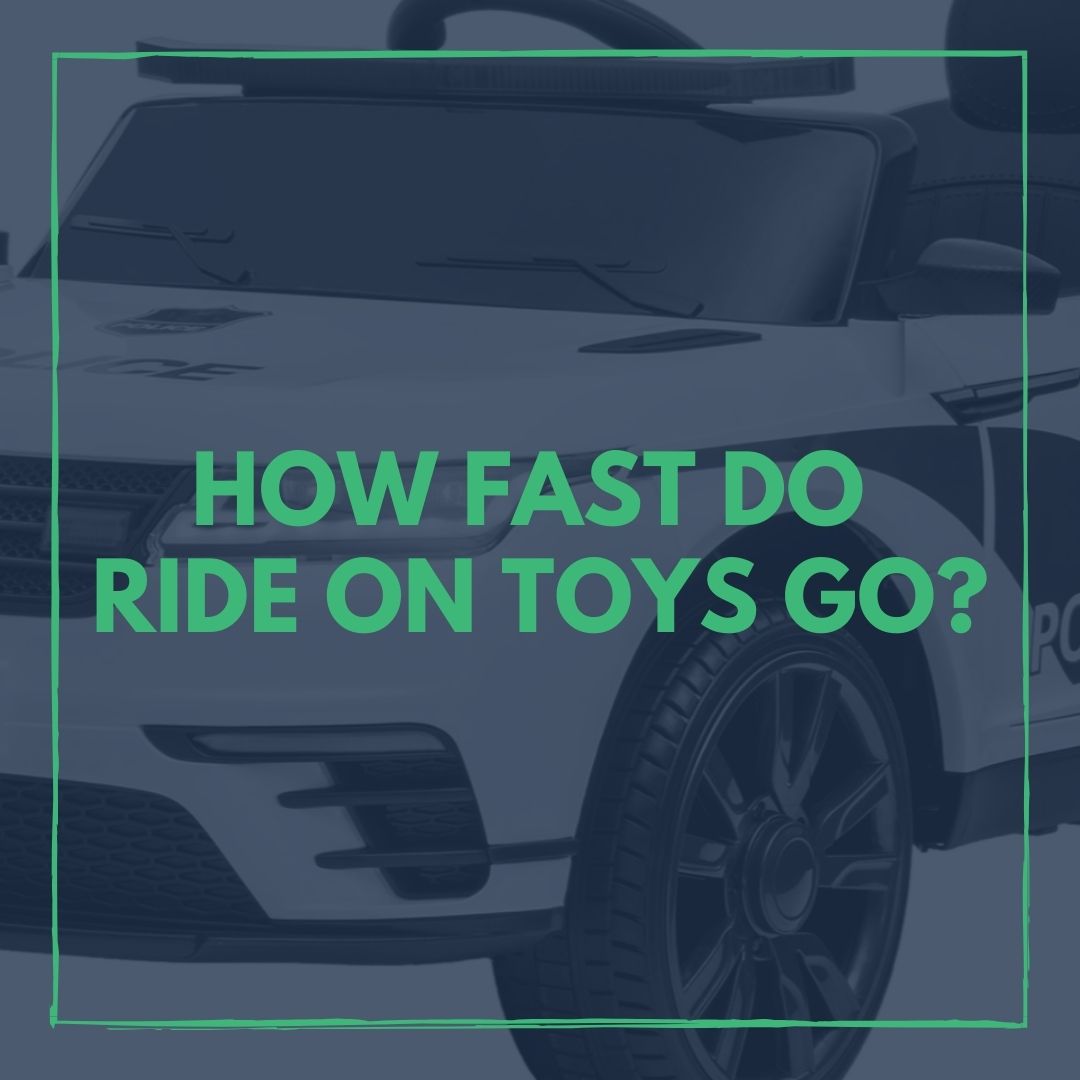
Learning to Use New Toys
Every child's learning curve is as unique as their fingerprint, and mastering a new toy can come with its ups and downs.
Providing a supportive environment where children are free to make mistakes and learn at their own pace is crucial.
As children transition from tentative first pushes to full-on racing down the driveway, their journey will be punctuated with falls and triumphs.
With each ride, they gain not only more skill but also confidence in their own abilities and resilience in the face of challenges.
In Addition
The cost of ownership for a kid’s ride-on toy extends beyond the initial purchase price.
Prospective buyers should also consider the battery life and whether the model uses a 12v battery or 24v batteries, as these will influence the charging times and how often the toy will need a battery replacement.
Licensed and unlicensed models differ significantly in terms of cost, with licensed versions often featuring a higher level of attention to detail and quality, but at a higher price point.
Understanding the Cost of Ownership
Compare initial and long-term costs to budget effectively for your child's ride-on toy:
Comparing Ride-On Toy Costs
When selecting a ride-on toy, balancing initial expenses with long-term value is crucial.
Here's a breakdown to aid your decision:
| Cost Type | Less Expensive | More Expensive |
|---|---|---|
| Initial Costs | Under £50, fewer features, safety as a priority | Several hundred pounds, immersive experience, age-appropriate |
| Long-Term Costs | Battery costs, potential for shorter lifespan, minimal repairs | Fuel for petrol models, higher durability, cost of replacement parts, storage considerations |
Including additional accessories can significantly enhance a child's play experience.
Items such as covers to protect the toy, training cones for an improvised driving course, or even themed stickers, can add an extra layer of fun.
It's also important to consider the indoor use capabilities of a ride-on toy as well as its performance on outdoor terrain.
The weight capacity should also be noted to ensure the model can support the maximum weight of your child without compromising safety or functionality.
Conclusion
Choosing the right ride-on toy involves assessing battery sizes, ensuring appropriate charging time, and considering whether the toy is suitable for indoor and outdoor use.
Remote control for adult supervision is also a key feature, particularly for younger children or children with special needs to provide them with an opportunity to play and learn safely.
Finally, the clean and maintenance aspect of your kid’s toy can't be overlooked.
A consistent cleaning routine and proper storage will extend the lifespan of the toy and ensure it remains safe and functional for years to come.
Addressing maintenance issues promptly and following the recommended battery charging times can prevent wear and tear and keep the ride-on toy running smoothly.
FAQs
What should I consider when choosing a ride-on toy for different age groups?
When selecting a ride-on toy, consider the child's age and motor skills. For toddlers (1-3 years old), look for stable, low-speed models with simple controls. As children grow (4-8 years old), they can handle more features like higher speeds and interactive elements. Always check the manufacturer's age recommendation for guidance.
How do I determine the right size and type of ride-on toy for my child?
The right size ensures your child's feet can touch the ground and they can comfortably reach the controls. Opt for a go-kart or pedal-powered toy for active play, or a battery-powered vehicle for an easy ride. Consider your storage space and whether the toy will be used indoors or outdoors to determine the best type.
Can ride-on toys really aid in my child’s development?
Absolutely. Ride-on toys can help with physical development by improving balance, coordination, and motor skills. They also encourage imaginative play, which is crucial for cognitive development. Look for toys that are appropriate for your child’s age to ensure they are challenged without being frustrated.
What safety measures should I look for in electric ride-on toys for my kids?
Key safety features include a sturdy construction, seat belts, and low-speed options for beginners. Parental remote controls offer additional safety for younger children, allowing an adult to take over when necessary. Always follow manufacturer guidelines for use and invest in the recommended safety gear, such as helmets and pads.
Get in Touch 🚀
Loved our article on “Kids Ride on Toy Buyers Guide” Got the itch to dive into more wheely-awesome info?
Whether you're a parent or a grandparent, we're here for all your kids ride-on toy questions! 🚗💨
Feeling click-happy?
Jump straight into our wonderland at RiiRoo.com.
Or, if you're more the chatty type, give our Live Chat a whirl and let's talk toys!


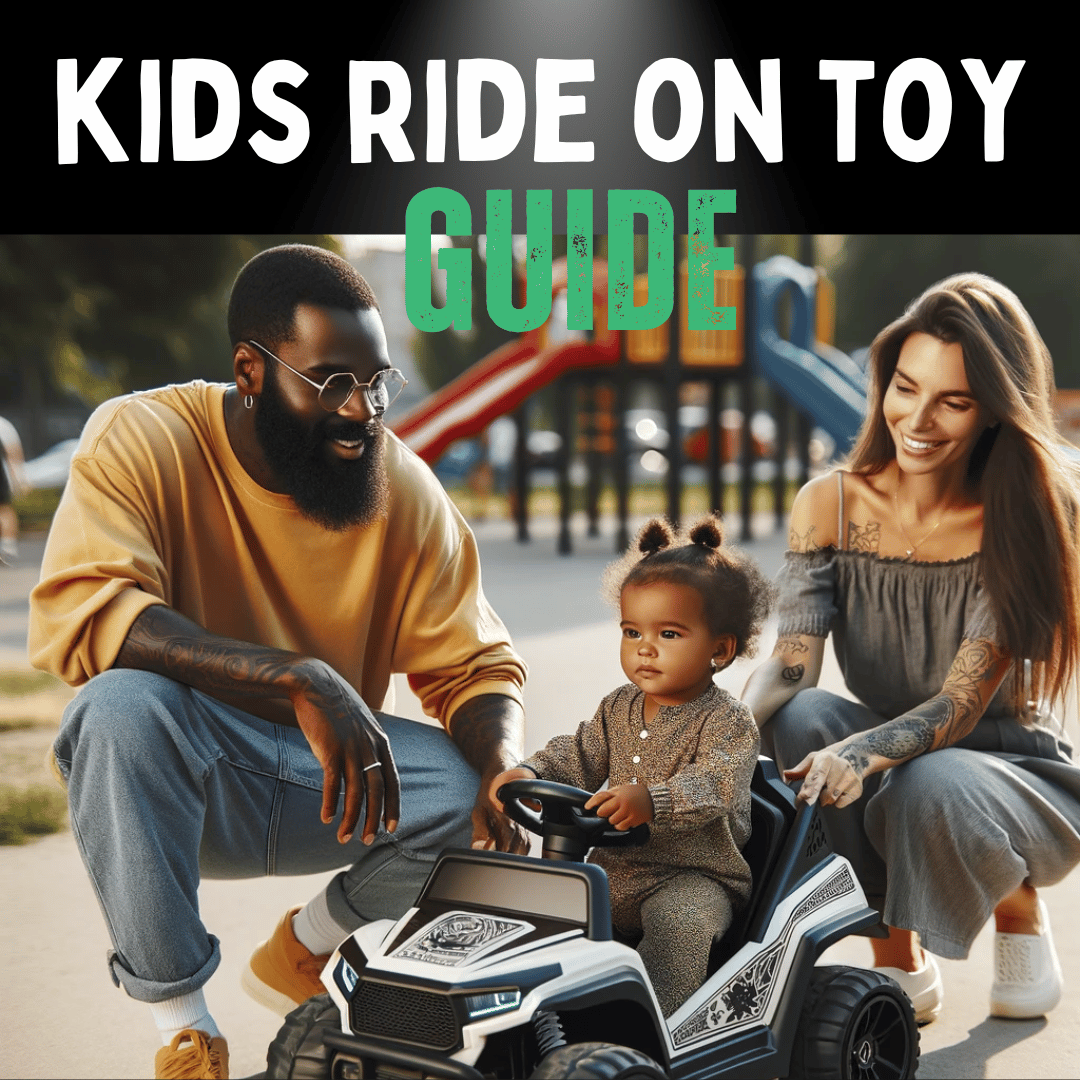

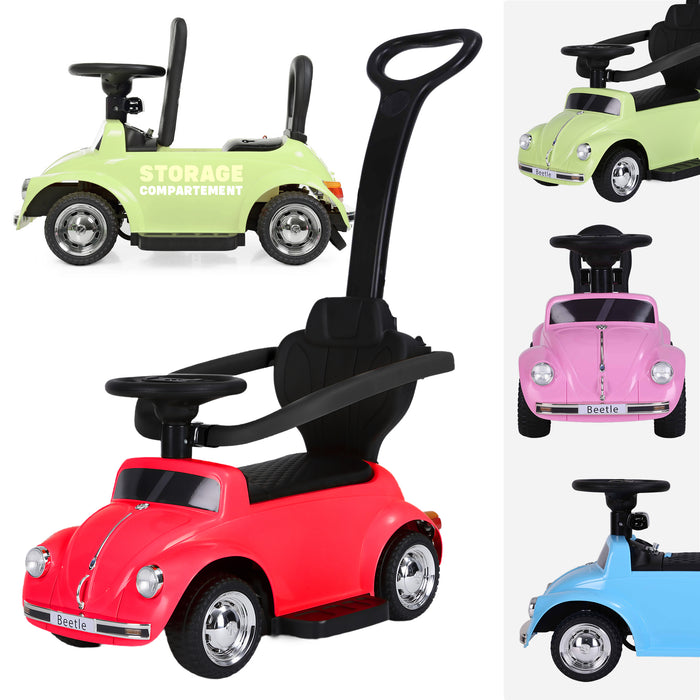
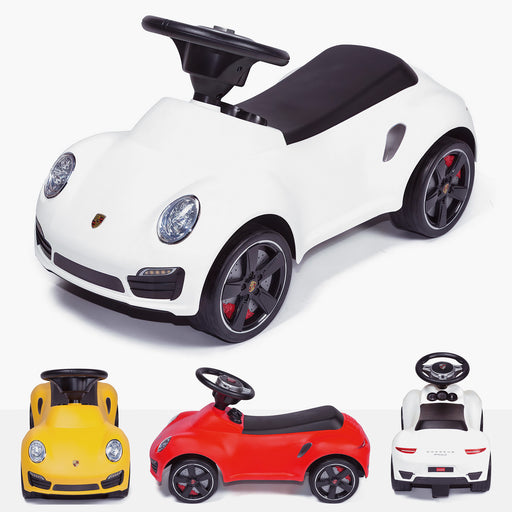

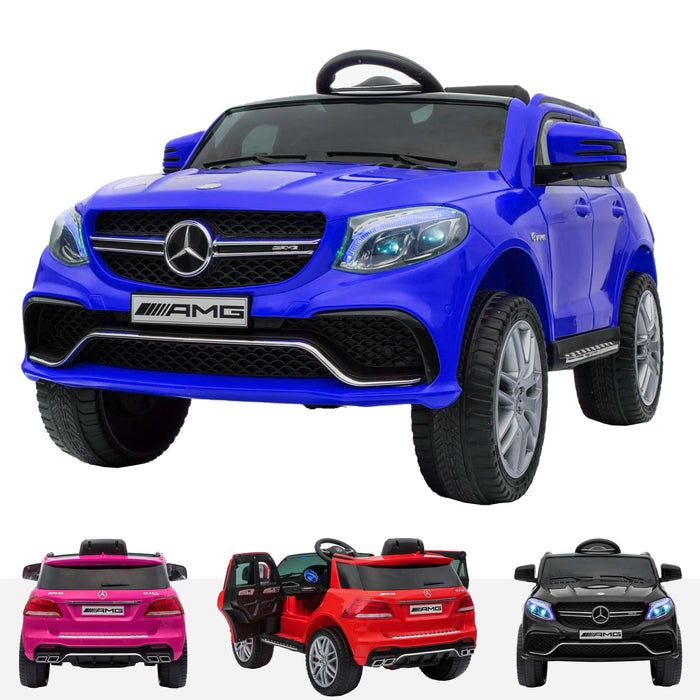





Share:
How Far Can I Ride My E-scooter?
7 Ways To Choose The Right Kids Ride On Toy Colour